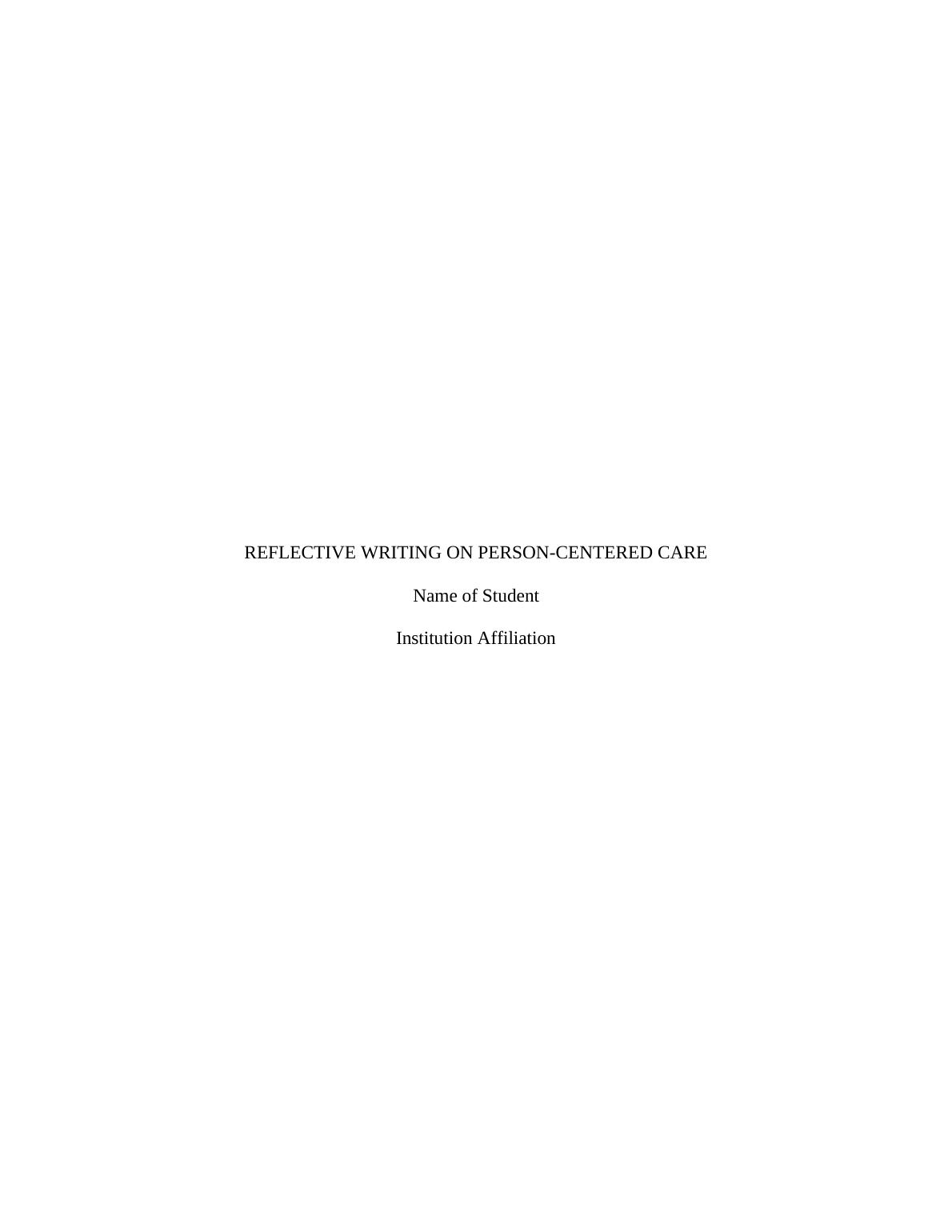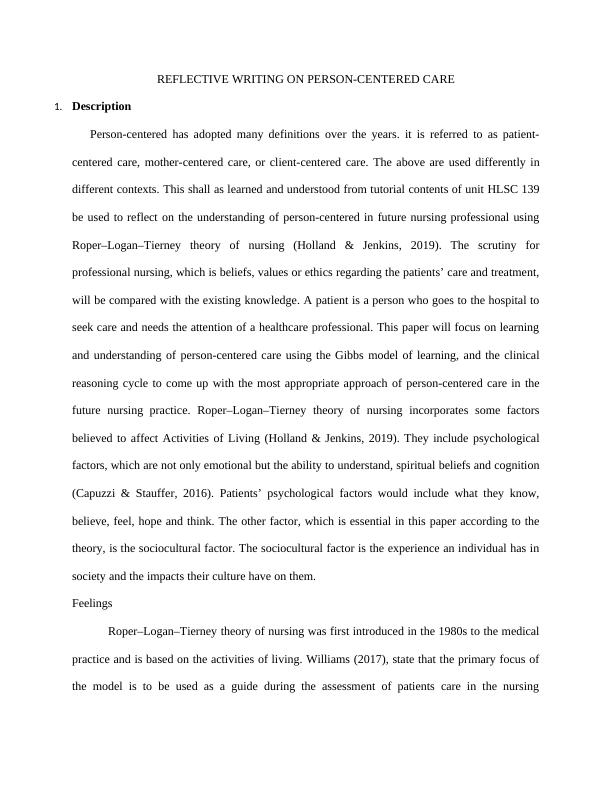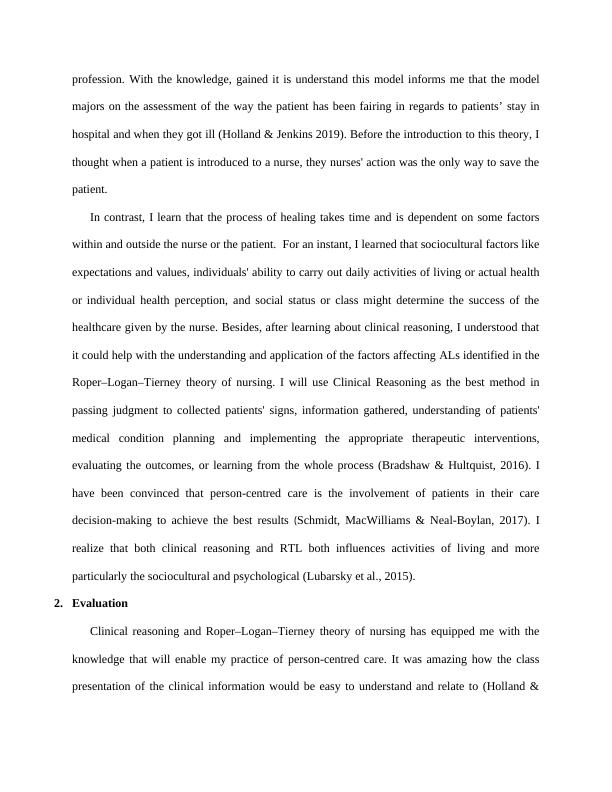Reflective Writing on Person-Centered Care
This assignment requires a reflective essay on the learning experience and understanding of person-centred care, Roper Logan and Tierney's model of care, and the Clinical Reasoning Cycle. The essay should incorporate how this learning will inform future practice and personal philosophy of nursing and person-centred care.
Added on 2023-03-17
About This Document
Reflective Writing on Person-Centered Care
This assignment requires a reflective essay on the learning experience and understanding of person-centred care, Roper Logan and Tierney's model of care, and the Clinical Reasoning Cycle. The essay should incorporate how this learning will inform future practice and personal philosophy of nursing and person-centred care.
Added on 2023-03-17
End of preview
Want to access all the pages? Upload your documents or become a member.



